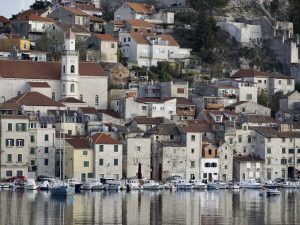As a Navy family, we’ve had our share of atypical Thanksgiving celebrations as a result of deployments and living overseas. Although I am no longer on active duty, this felt like another one of those years.
We got up in Pula and had a plan to visit three towns in the central hills of Istria before sunset. Based on our experiences the day prior, we had modest expectations of both the weather and the liveliness of the towns we planned to see. We were thankful to see blue skies as we approached our first stop.
Pazin
If you think of Istria as an upside down isosceles triangle and you put a dot on its geometric center, you’d be very close to the town of Pazin and only 25 miles from Rovijn to the west.
Whereas the coast of Istria was ruled by the Venetians for over 500 years, Pazin was firmly under the administration the the Austrian monarchy and Austro-Hungarian Empire during the same period of time. In German, Pazin is known as Mitterburg because that was its name for several centuries. The Austrians gave up Pazin only after the collapse of their empire in 1918, at which point Pazin came under the rule of fascist Italy. During WWII, Pazin was something of a “border town” between Yugoslavia and Italian Istria and it suffered attacks from Yugoslav partisans who eventually seized control of Istria and made it part of Yugoslavia following the war. The main reason Pazin was able to remain under Austrian rule for so long was its castle, which has both elevation and an impenetrable steep cliff on one side making it an ideal point of defense. I also suspect the Venetians, as a maritime empire, were limited in both resources and interest for going too far inland. Why bother with controlling the middle if you can control the sea ports?
Our main goal in Pazin was to visit the castle, but we soon learned that the gorge next to it comes as part of the package. The castle itself lacks ramparts and high lookouts so we didn’t get the views over the town and the surrounding valley that we’d been hoping for. Most of the castle has been turned into an ethnographic museum of Istrian culture and history. Not what we expected but we enjoyed the museum and its glimpse into the soul of Istria.




The museum had exhibits on traditional crafts and trades, a really interesting video on traditional barrel making, the mining industry at the turn of the (last) century, life during the preceding centuries, and an assortment of quirky quotations from an unclear source posted randomly on the wall. You might notice a resemblance of the Croatian father figure in the vintage photograph below; like many places in Europe, life in Istria over the centuries was a tough existence for the working class, the farmers, and the feudal serfs before the rise of nation states. It’s no wonder they didn’t smile for pictures.
The museum was also the apparent home for retired Istrian church bells. The bells in the bottom photo were locally manufactured several hundred years ago (1400-1500s) and each labeled with the Istrian church where they rang for centuries before retirement. There’s an old joke where the punchline is “he’s a dead ringer” and it was sadly my first instinct to get a photo acting that out. We were practically the only people in the museum, so I didn’t cause any kind scene.



Pazin has a gorge and a castle. The town has charm but it sits 25 miles from where all the beachgoers come in the summer. What’s a tourist bureau to do? Hey, let’s build a zipline over the gorge. Not only does Pazin have a zip line over the gorge but you ride it diagonally over the gorge in two legs and end at a bridge only a few hundred meters from the starting point. The zipline wasn’t running (not enough business to make it worthwhile this time of year) but we saw enough of the infrastructure to appreciate what a thrilling ride it must be.
After the museum, we drove to the other side of the gorge and discovered too late that just down from the castle is a bridge you can across to get a good view of the gorge. The castle didn’t have many windows so we never saw the bridge while we were in the castle. From where the zip line begins, you can walk a descending path down to the bridge and to the end point of the zip line.
These photos show the depth of the gorge, the two-legged zipline, and the tourist “photo spot” at the start of the zipline where you can make your own post card taking a picture of a the billboard-esque frame (Istria’s response to the Spanish custom of spelling out the city’s name as a photo spot). The final photo is taken from the middle of the bridge. In the first photo, the castle and its cliff were blocking our view of the bridge completely.





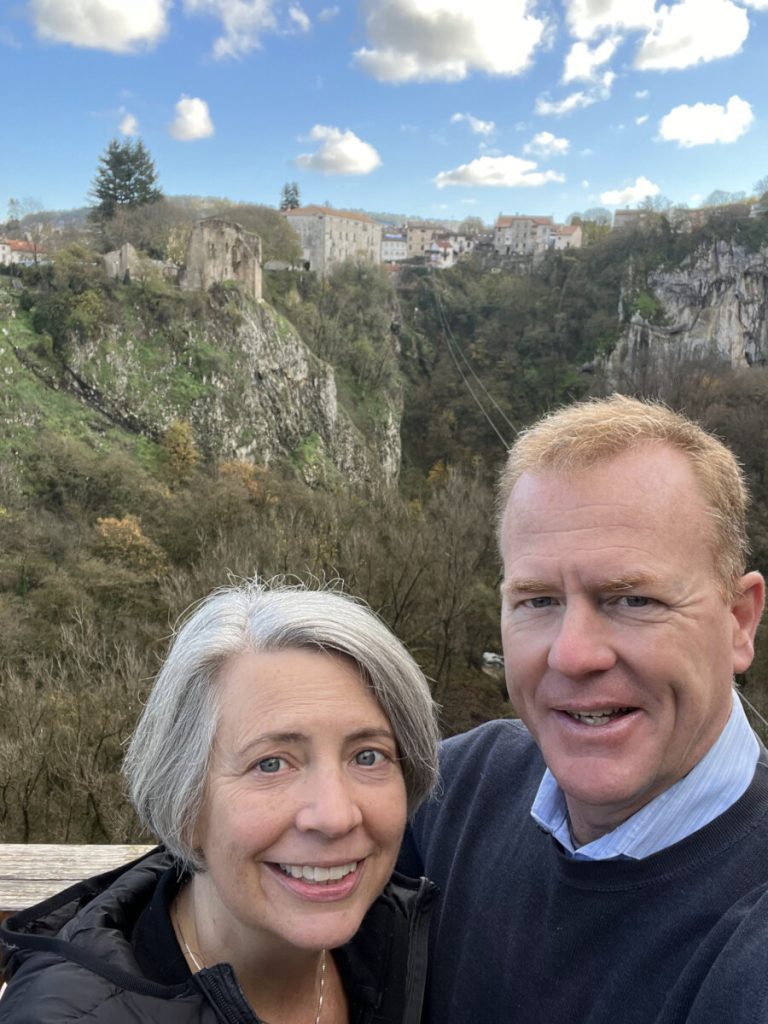
We were getting hungry and spent longer in Pazin than we had expected (which is a good thing because it meant we were taking our time through the museum and the walk around the rim of the gorge). We were getting hungry and it was Thanksgiving, after all, so we set our sights on the town of Motovun only 15 miles away and Lyn got to work (as intermittent cell phone connectivity allowed) finding a restaurant suitable for the holiday.
Motovun
In the tour books, Motovun is the king of the hill towns as Rovinj is the queen of the seaside towns. This worried me a little after our lackluster visit to Rovinj the previous day, but my fears were definitely misplaced. When you see Motovun from a distance, it makes a great first impression. When tourists traveling in a car get to the bottom of the hill at Motovun, they are faced with a decision. Park at the bottom and walk up (it’s not a small walk) or drive up and gamble on finding a parking spot near the top. The month of the year and the day of the week influence this decision calculus dramatically. We considered parking at the bottom because Lyn just LOVES walking up and down mountains, but in the interest of time and our appetites, we decided it was worth the risk of driving to the top. Our awesome parking spot just 100 yards from the “no vehicles beyond this point” zone validated that Thanksgiving is just another late Fall day in Istria and that visiting Istria in the off season has its perks.

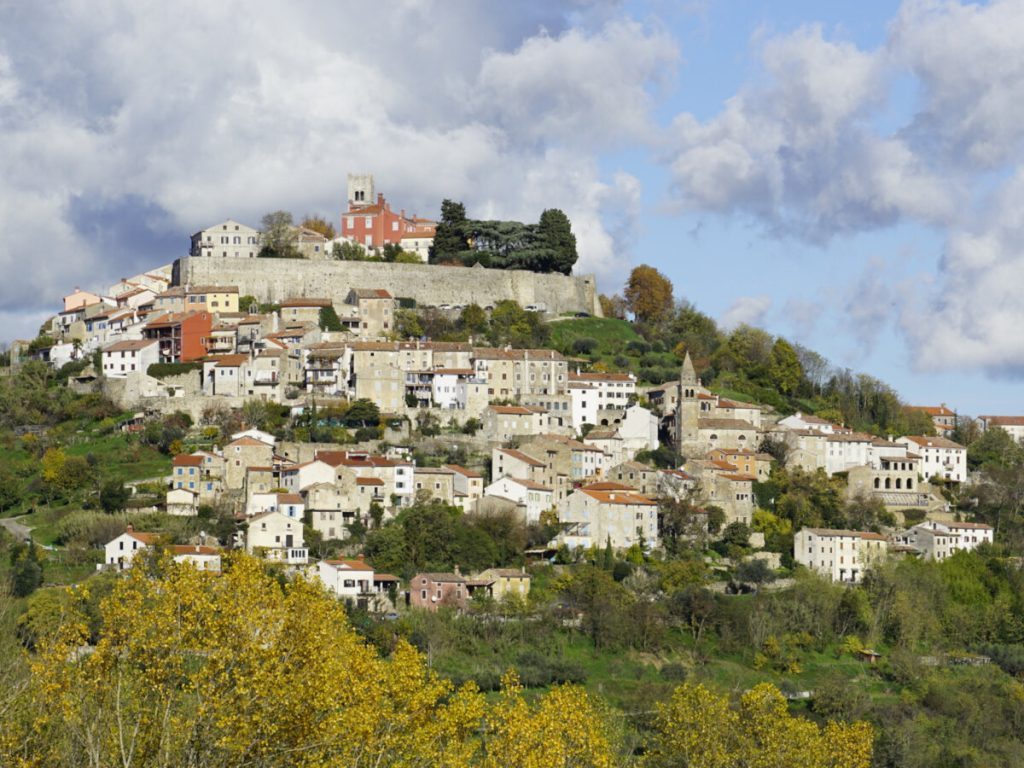


When you visit on a tour bus, the big thing they promote, besides the town’s hilltop charm, is that Motovun and the nearby village of Livade are the hub of Istrian truffle hunting. Everything is truffle this and truffle that. Feels like hype at first, but the fact is that conditions for truffle growth are ideal in this part of Istria. We had heard earlier in the week at a restaurant in Pula that this year’s exceptionally dry summer had hit the truffle business pretty hard. Walking around Motovun, however, you’d never know it was a bad year for truffles.
Since everything in Motovun seems related to truffles, it was not surprising to find out that Anthony Bourdain visited Motovun during an episode of “No Reservations” (season 8, episode 3). Lyn identified the restaurant where he ate, which is called Konoba Mondo. When we arrived at 1:30, not only did we not need reservations, but we were the only people in the restaurant until the very end of our meal. Lyn followed the “When in Rome…” dictum and got the tagliatelle with truffles (their specialty). I followed the “It’s Thanksgiving, dammit” dictum and ordered pork medallions on a bed of cranberry sauce (turkey and stuffing were not to be found on an otherwise wonderful menu). We also had rustic bread with a paste of crushed black olives and an arugula salad covered in parmesan cheese. We each had a glass of Malvasia white wine and the waiter brought a complementary small glass of a cherry brandy digestive called teranino at the end. It was all delicious.
The coolest thing is that our waiter was the SAME GUY in the photograph serving Anthony Bourdain in 2011. This is probably the first and last restaurant we will dine at with the “Anthony Bourdain was here” fame. Cost of the meal? $65 dollars; this was a bit of a splurge but it was a fraction of what we would have paid for the same meal and the same excellent service in the U.S.
As a sidenote, the word “Konoba” is kind of like a trattoria or a tavern or a meson, which serves traditional local food in a warm, friendly atmosphere. You see konobas all over the place in Croatia.
For the three people that have been consistently reading my blog posts, you might remember the funny story of our friend running up the stairs to use the WC (which wasn’t up the stairs) at a restaurant in Provence, France. We thought about her when we saw the sign at Mondo Konoba telling people the WC indeed IS at the top of the stairs (the sign is not entirely intuitive though).










After lunch, we took a walk up the hill into the walled section of Motovun and then paid a couple bucks for access to walk the walled perimeter of the town and enjoy the panorama of the surrounding countryside. We found the kid’s playground with the world’s best view (photo #4) and we also came across the locals decorating for Advent (last photo).
The big political fight we read about in Motovun is whether to build an 18 hole golf course in the valley below the town. In addition to changing the aesthetic of the rural countryside, the opponents of this effort say it could hurt truffle ecosystem. More pragmatically, this proposal is apparently causing wild real estate speculation and driving up the cost of living for locals. SAVE THE TRUFFLE!!!
In photos #5 and #6, you can see the cemetery with long spindly trees. Our great parking spot was right next to that cemetery. Much like Italy, those dark spindly evergreen trees are common in cemeteries throughout Istria. Americans associate these trees with picturesque hilltop villas in Tuscany, but to a local in Croatia those trees have one meaning: “come visit grandma”.
Not ironically, our parking spot in the next town was also right next to the cemetery. The custom putting the graveyard well outside the city walls and not building near it for centuries postured these towns perfectly for the advent of the automobile and the tourism boom of the 20th century.








For a touch-and-go visit, Motovun delivered an awesome Thanksgiving meal and some great scenery. We had to keep moving though and made our way back to the Kia Picanto for our final mountain town visit.
Groznjan (pronounced groze-nee-YON)
We almost skipped Groznjan but decided we’d never be back this way so we should push ahead on our plan. Although Anthony Bourdain never visited Groznjan, it is a well known a charming hilltop town and famous in Croatia as an artists’ colony and the site of an annual music festival.
Gorznjam is very far north in Istria and sits just a few miles south of the Slovenian border. Its population has a strong ethnic Italian component and it was part of the “Free Territory of Trieste” after WWII. If you want read about an obscure but fascinating episode in post-war Europe, the creation of the “Free Territory of Trieste” definitely exposes a lot of historical issues in this part of the world. It makes you question if the current geopolitical structure is truly stable or if we just haven’t lived long enough to see what the next dramatic chapter will be for this corner of the Adriatic that has seen so many foreign powers come and go. I’d like to believe the influence of democracy, the information age, the creation of the EU and NATO, and the relative prosperity of Croatia and Slovenia will continue to gain inertia and re-affirm their role as productive, responsible, and independent nations.
Groznjan itself was far less exciting. We found some interesting metalwork that appealed to my naval sympathies in one of the plazas, but they had no apparent attribution or backstory. We also found some nice narrow street views (this is a town with no vehicles) and a vista over the surrounding rural area. Not many stores or art studios were open and not many people were on the streets. Again, it’s probably a completely different experience in the summer time, which was evident from the terraces and plazas loaded with chairs and tables in storage for the winter. Another touch-and-go, but Groznjan was pleasant enough and we had fun just trying to say its name properly.





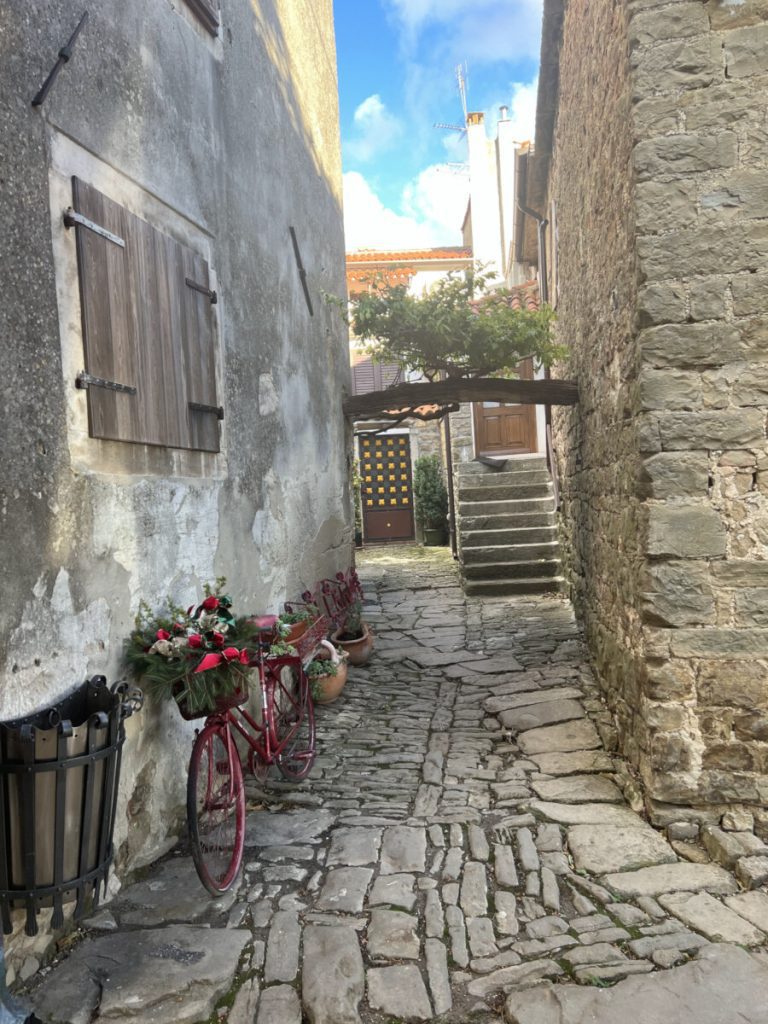
After Groznjan, we drove to the city of Umag on the coast mainly because I thought it was just such a cool sounding name (Oooh-Maaag!). We watched the sunset there and then drove to our hotel for the night in the town of Novigrad. These towns don’t fit thematically with the title of this post but we had a great time in both of them so I am adding in our photos to keep the chronology intact.
Umag at sunset



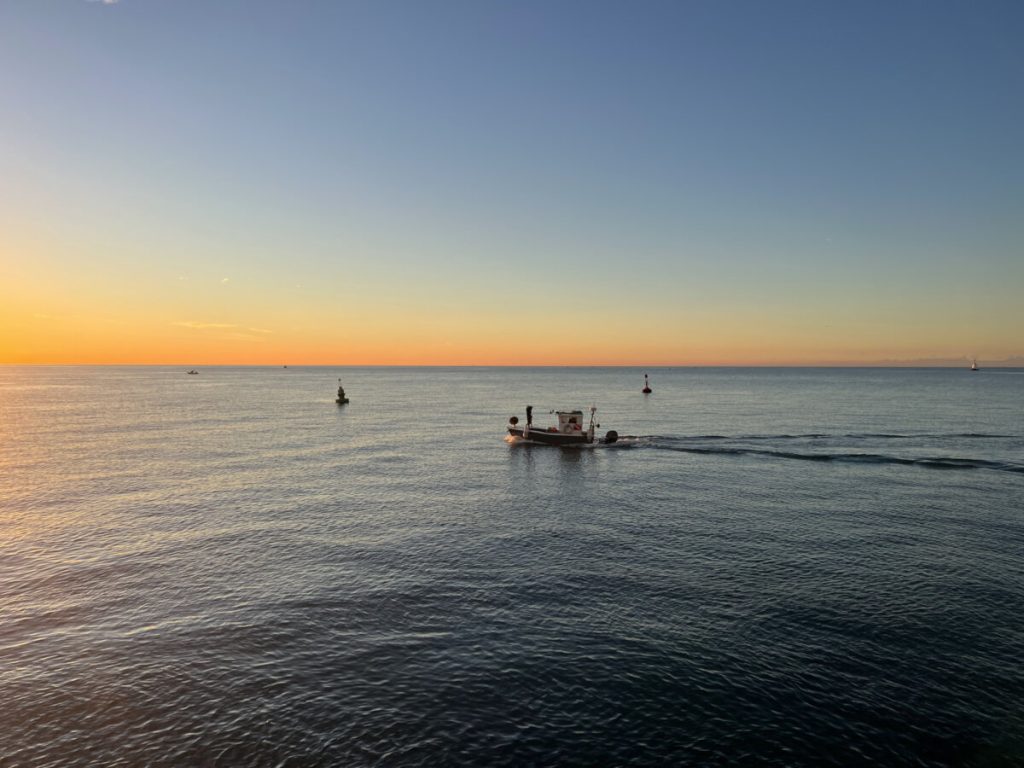


Novigrad
The town of Novigrad is just south of Umag and just north of Porec where we had been the day before. We splurged a bit for Thanksgiving and stayed in a nice hotel called the Palazzo Rainis hotel that included a sauna and steam bath similar to the Austrian sport hotels we fell in love with during our hike in the Tyrolean Alps. Our nightly rate would have gotten us a nice Hampton Inn stateside, but in the summer I’m sure this room would have been at least triple what we paid. The hotel sits next to an enormous marina and caters to sailboat owners looking for a night of luxury off their yachts in the high season. The hotel was getting ready to close down for the winter on December 1st so we were the dying embers of its business for the season.
Aside from an awesome sauna, the best part about our stay was being able to use the hotel’s bicycles free of charge the next morning. We took a ride along the coast and then circled back for a quick tour through the town of Novigrad. It was great weather and we had a blast riding the bikes. Not to my dismay, they didn’t have helmets for us to wear (give it 10 years and I’m sure the hyper sensitive safety culture will find its way to Croatia).
In Novigrad, we found their waterfront which included not only ladders for swimmers to get in and out of the Adriatic but also some neat pools that get filled with each high tide (chlorine not required). We even saw an old guy swimming in the Adriatic, which apparently is a year round activity for the heartier souls of Istria and perhaps some crazy German expatriates accustomed to a colder climate.
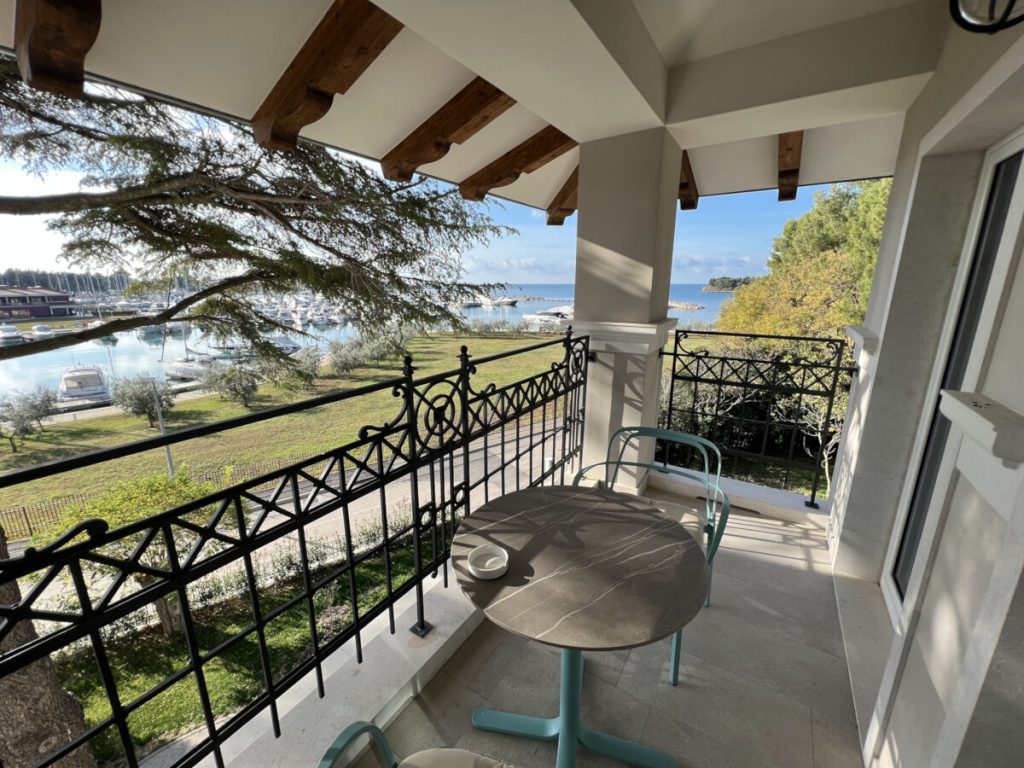




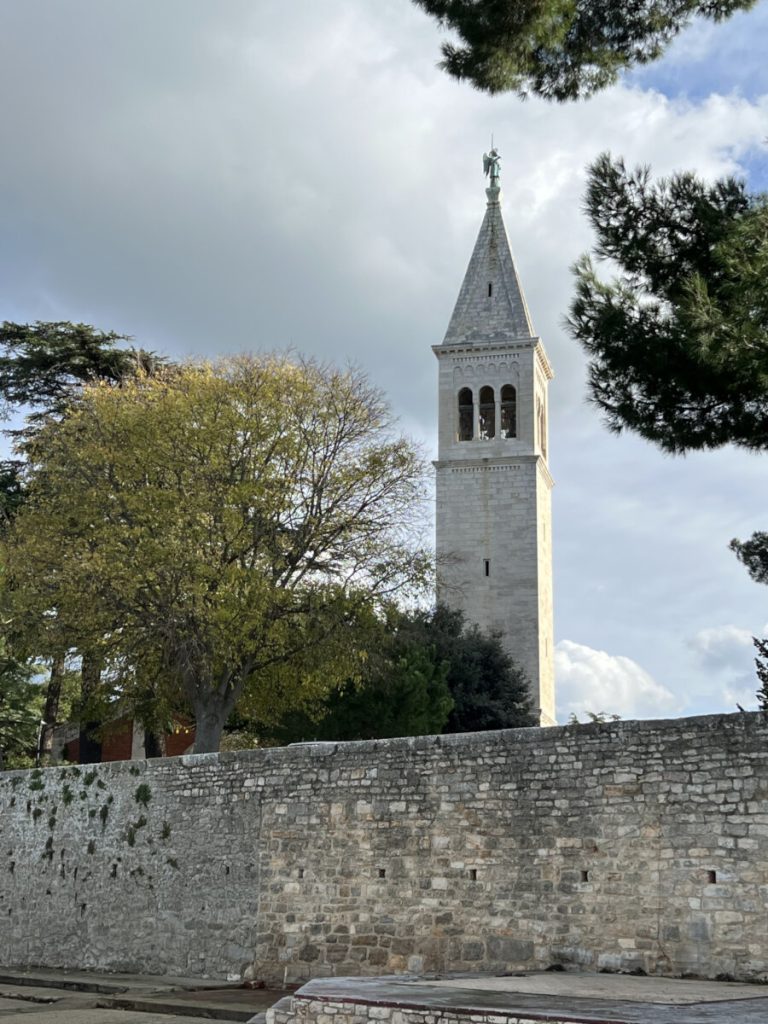



We definitely had a non-traditional celebration of Thanksgiving. No Macy’s parade, no Lion’s game, no turkey, and no family. However, thanks to the power of globalization we didn’t miss a chance at the most important part of the American Thanksgiving celebration.




